Badi Life
Relaxing summer days at the badi have long been part of the ZIS tradition. Voices spoke to alumni and parents about their memories of blissful days spent by Lake Zurich.
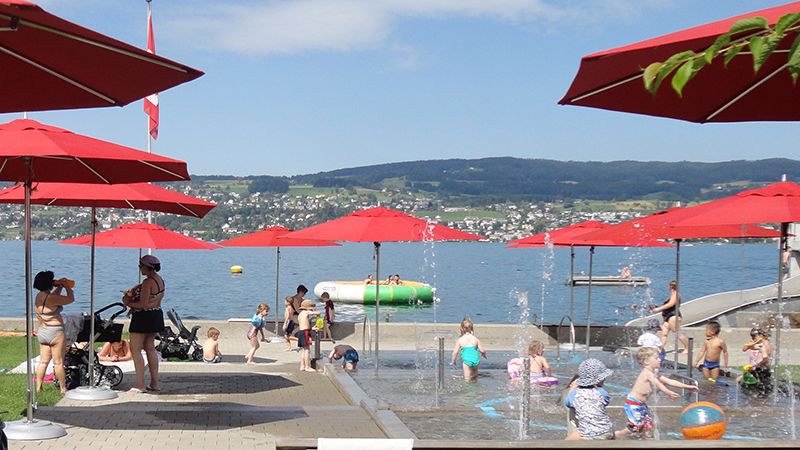
Explaining badi culture to someone who hasn’t experienced it can be difficult. There is the swimming, of course. Bratwurst. Coffee and a chat.
But somehow, none of this quite captures the true spirit of a long, hot summer day spent with school friends at the ‘strandbad’, the lakeside grassed areas that serve as Switzerland’s beaches. It simply has to be experienced to be truly understood.
Of course, for many members of the school community, the badi has to be Kilchberg. “It seems to be the badi that everyone goes to, the place to be,” says Cath Reza, Student Support Assistant Teacher at ZIS and mother of three students at the school. “It can be really fun and sociable. It has beautiful views and lawns and a great smell of chocolate from the Lindt factory across the road. It is a great place when it is not too crowded!”
For Alison Smith, Class of 1976 (1972-76), the Kilchberg badi was the centre of her summer social life. “I met both my AISZ and my Swiss friends there any day the weather allowed,” she says. “I still remember the smell of damp, clean concrete in the changing area and, even more vividly, the smell of baby oil which we slathered on after every swim. Getting as tanned as possible was the goal – sunblock was out of the question!”
And then there is the freedom. Local teen culture, wherever it is in the world, has a habit of centering itself in a single place – the drive-in, the mall, the town square, the park, the beach – as teenagers naturally seek out somewhere they can be themselves and explore new freedoms. For many students, the badi is that place, and for those new to Switzerland, it can be something of a revelation.
Teen spirit
“The badi was an environment that allowed us to give expression to both the young adults we were becoming and the children we, quite frankly, still were,” says Alison. “One minute you might be flirting with a gaggle of boys or gossiping with your girlfriends and the next you were playing tag and yelling ‘watch me’ again and again as you perfected a spectacular belly flop off the raft. We felt as though we were free and independent from our parents, but of course we were still under the hawklike ‘supervision’ of the Bademeister, who never missed the moment we dropped a gum wrapper, entered the adult changing areas or dawdled after closing hour!
“Hours were spent swimming under and around the rafts which were moored just out from shore. The water temperature always seemed ideal, the few fish and bits of seaweed occasionally at our toes, unthreatening. The carefree and endless bake, swim, flirt, gossip cycle was repeated all day, punctuated only by trips to the little restaurant for Orangina, bratwurst and pommes frites.”
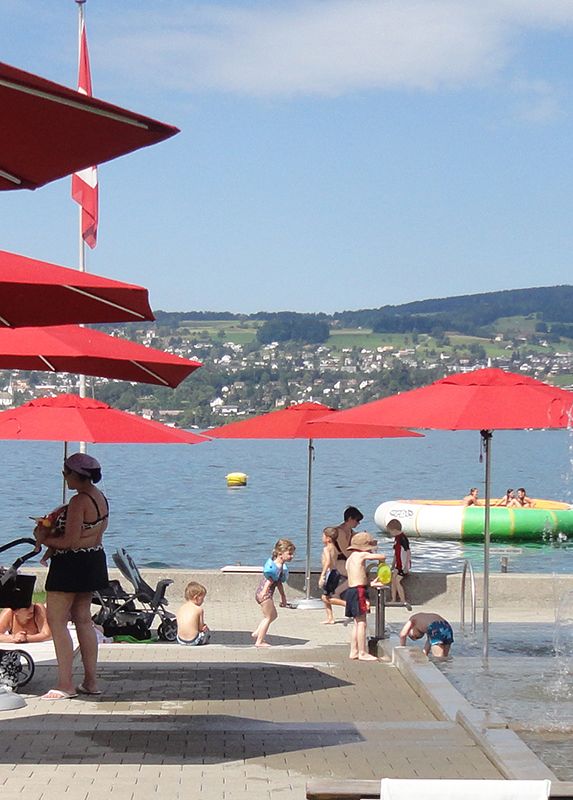
"The hawklike Bademeister never missed a dropped gum wrapper or dawdling after closing hour!"
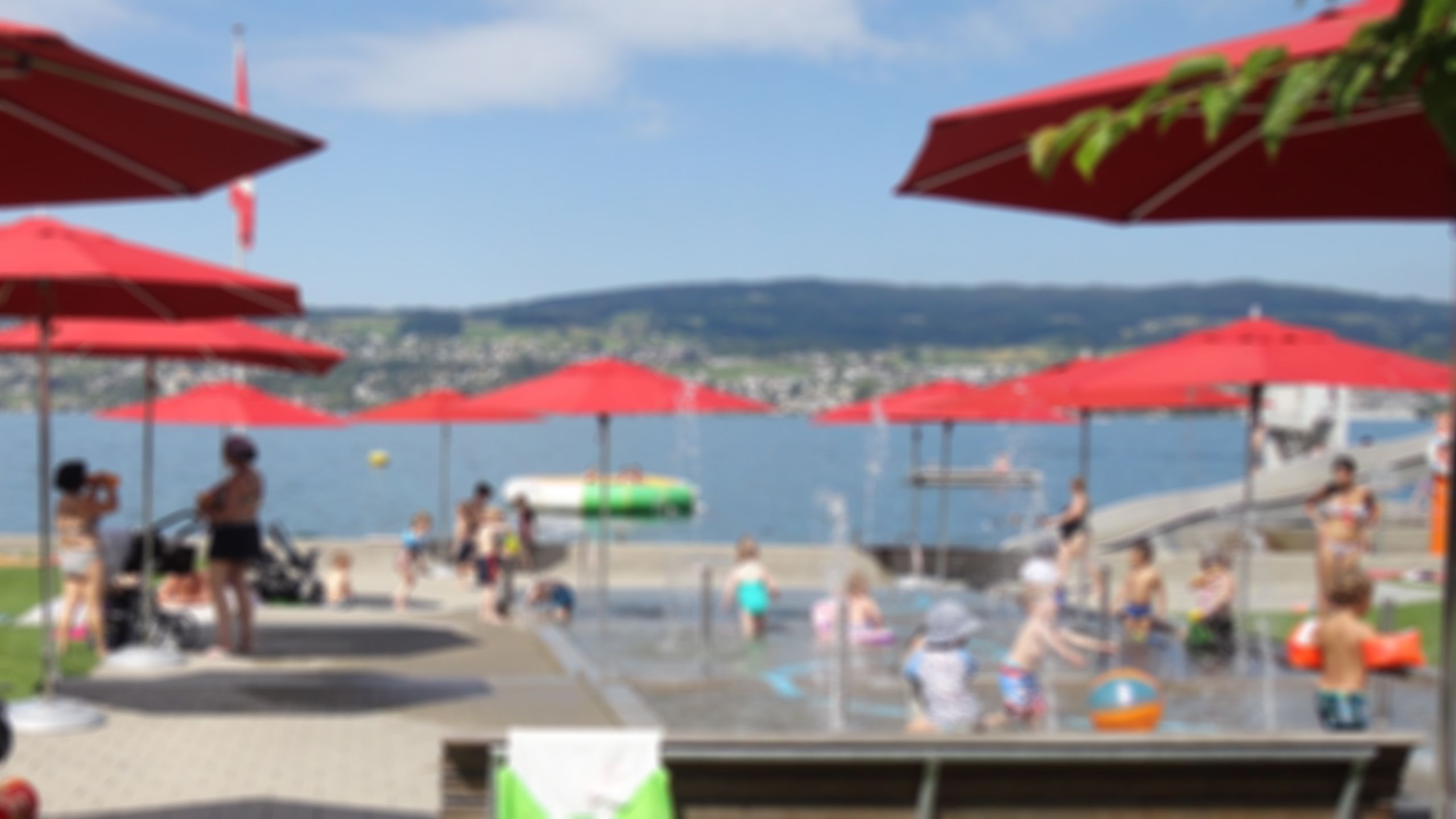
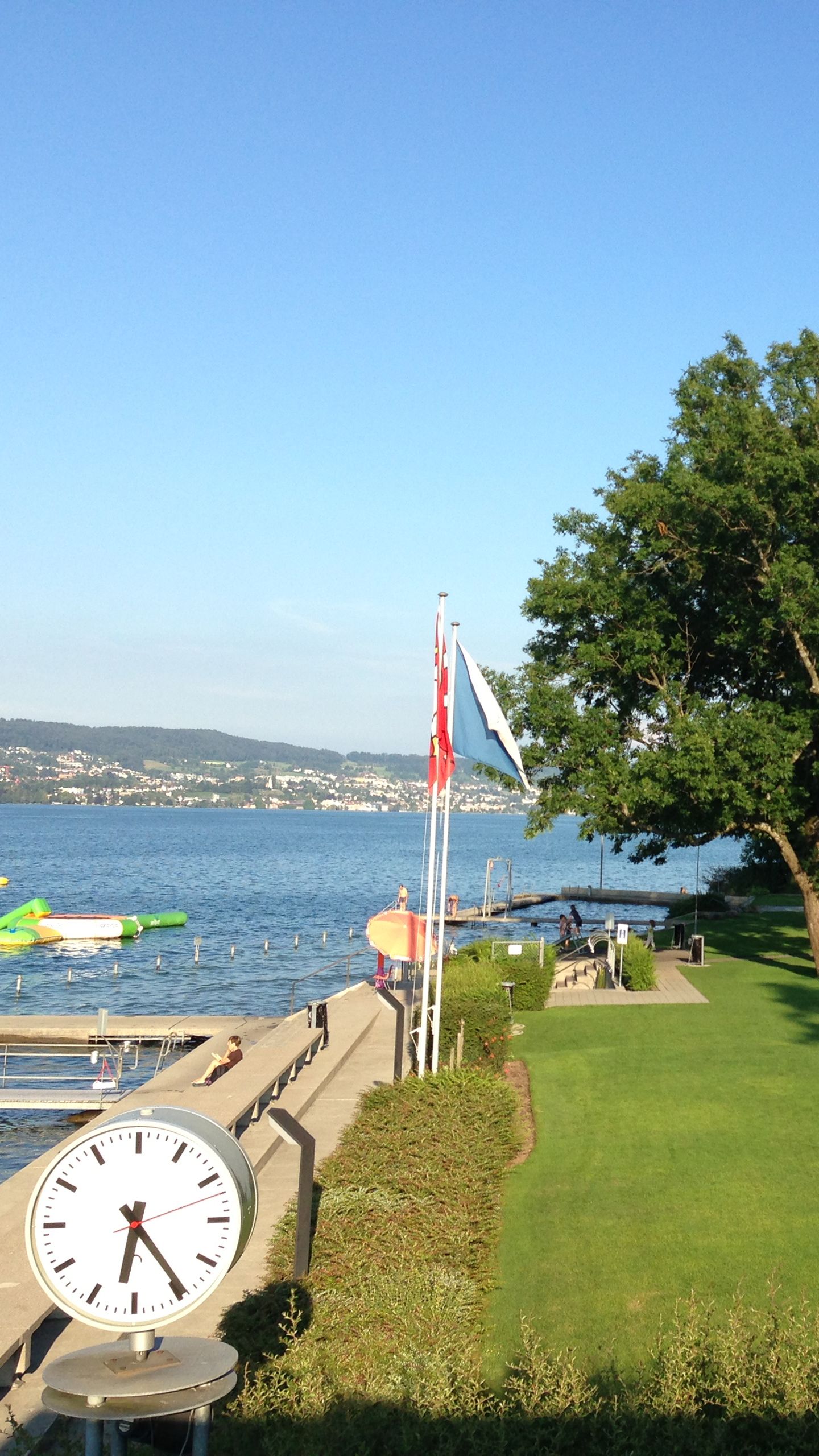
Marika Jones’s crowd favoured the Tiefenbrunnen badi, which offered everything from volleyball to pilates to a 60-metre long lake slide. “The craze when I was there was all about plaid Eddie Bauer shirts and old school rugby jerseys,” remembers Marika, Class of 1993 (1990-93). “In the evening we had plenty of parties down there, sipping our drinks and chatting – it was ‘our gang’. We were all fairly innocent and good students. We were mostly American and those like me that weren’t American applied the same fashion: plaid shirts, jeans, Timberlands…”
And the view was equally spectacular, day and night, remembers Marika. “I particularly remember the stunning sight of the city lights and houses across the lake at night. I often did a night swim in the lake – so calm and beautiful, so clean and crisp and nice to swim in. The large trees, all along the lake, the picturesque view from the grassy area overlooking the hills across the lake and then down towards the mountains – such amazing memories. I often miss it.”
Auf dem See
Central to badi life is, of course, the lake – and while those who fell for its charms in the past might not have been able to enhance their enjoyment with a nice cappuccino and the internet, they had just as much appreciation of simply hanging out in beautiful places.
In the 1867 edition of his A Handbook for Travellers in Switzerland, the Alps of Savoy and Piedmont, John Murray writes: “The lake of Zurich has no pretensions to grandeur of scenery… but it has a charm peculiarly its own – that of life and rich cultivation. Its borders are as a beehive, teeming with population, and are embellished and enlivened at every step by the work of man.”
German poet Friedrich Gottlieb Klopstock lauded healthy outdoor life by the lake in verse: “Unclouded beamed the top of silver Alps/And warmer beat the heart of gazing youths/And warmer to their fair/Companions spoke its glow.” And there is this description in Goethe's
Auf dem See (On the Lake): “My blood flows fresh, my soul finds food/I roam the world at large/And Nature – smiles she not most good?/She holds my heart in charge.”
60
The slide, in metres, at Tiefenbrunnen

As a parent of young children, Cath Reza experienced the badi in a different way – her youngest daughter, Evie, Grade 5, was just two when they arrived in 2007. So the badi became the place where Cath would meet and chat with other parents as their children played together. First, however, she had to wait for it to open. “The first summer, when we got here, it was September and the badi was shut! It was really sad – everyone was saying: ‘It’s such a shame that you haven’t experienced the badi…’”
It was worth the wait though. The following summer, Cath remembers, they went to the badi almost every nice day – and there were plenty of nice days. In more recent years her daughter Lucy, Grade 7, and son Sam, Grade 9, have loved the freedom of being able to go to the badi after school with their friends. “They go down and have a swim in the lake, and we will often be there too,” says Cath. “And then the dads might come along after work and have something to eat. It's always so beautiful, with the mountains in the distance and the clean lake to swim in.”
24o
Average temperature, in centigrade, of pool at Kilchberg

Over the years, those times all blur into one, she says: long, lazy summer days, the children playing in the paddling pool or in the playground, the mums sitting and chatting over a coffee. The children are older now but they still go to the badi.
“The last time I was there, in fact, it wasn’t such a nice day – it was pretty overcast,” Cath says. “But that was nice, as there was hardly anyone there. It can get pretty crowded at times. At weekends it can be hard to even find a place to put your towel. But it was still warm enough to swim in the lake. And we all ended up having a big family game of volleyball with the kids and the parents, which you don’t normally do. Usually, the kids entertain themselves and the parents sit and chat. But it was such a fun day. We thought that we mustn’t just come when it’s sunny – the quieter days are lovely as well.”
Which badi is favourite varies from year to year. For many, Kilchberg badi, with its swimming pool right next to the lake and its small, rocky beach, was (and still is) the only place to go. “Kilchberg badi is the one where many, many ZIS families go to,” says Cath. “In my time, it’s always been the most popular place. I’m not sure exactly why that is, but it’s the one place you can go where your kids are guaranteed to meet friends and you’re also guaranteed to know people there. So it’s a really fun and sociable place to go in the summer.
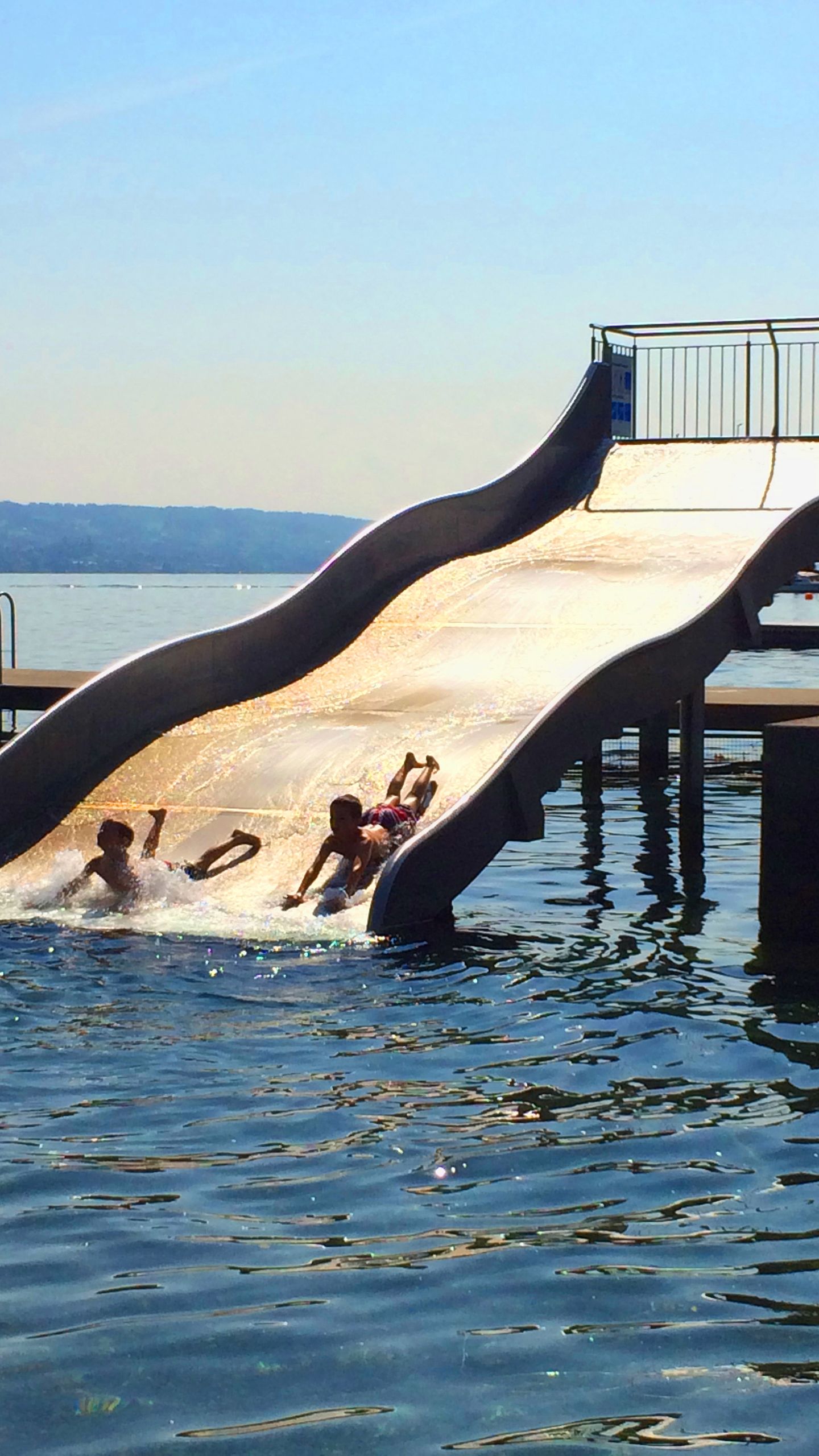
"We had no money, no dry clothes, hadn't told anybody and were barely visible in the lake as we dodged boats."

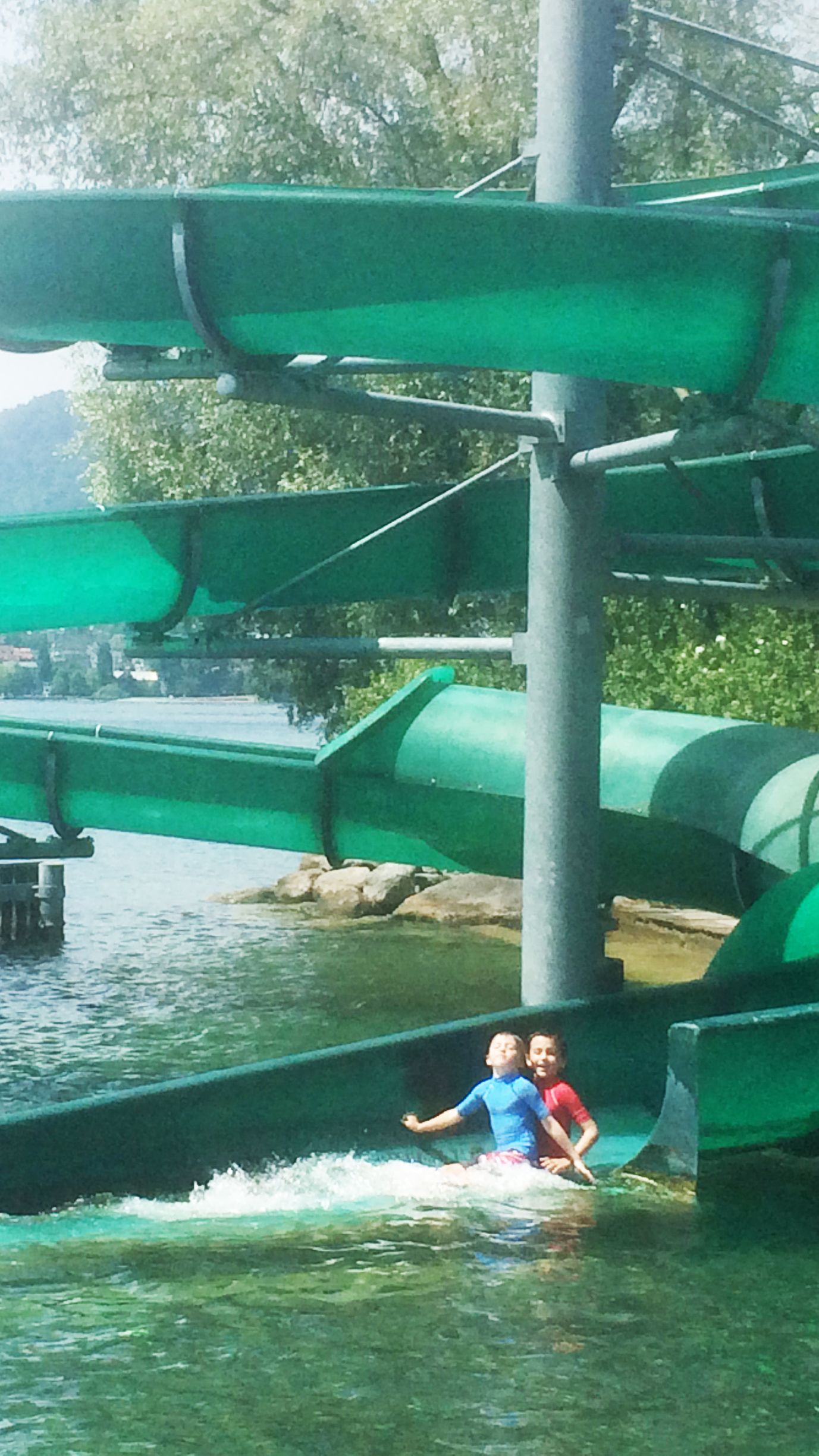
“Its popularity is a mystery. There are many times when I’d rather have stayed in Wädenswil, as that’s where we live, but the kids are always adamant. ‘Everyone’s at Kilchberg! We have to go!’ And usually it is worth it as you’d get there and they are all happily entertained for the whole afternoon and you can just relax.”
For Alison, Kilchberg holds one particular memory. “One summer, my classmate, Bill, and I impulsively decided to swim across the lake. In hindsight, and as a parent myself now, the idea was insanity. We had no money, no dry clothes, hadn’t told anybody and were barely visible in the lake as we dodged sailing boats and sightseeing boats on their rundfahrt!
“We crawled out in Zollikon, tired but victorious. We talked a petrol station owner into letting us use the phone and I called my friend, Ali, who lived nearby to bring me some money for the tram and bus. I remember travelling home with my wet bathing suit sticking to the seat. I didn’t tell my mother [Margaret Smith, teacher and Assistant Principal from 1972-1983] for years!”
Whichever badi you choose, it seems the essentials – sun, lake, friends – remain constant. Much may have changed since the days of Goethe and Klopstock, but the ‘gazing youths’ are still there, though they are more likely to be gazing at a smartphone these days.
Still, the badi is a place that will live long in the hearts of students and their families, years after they leave. For many, it represents a special time – a time of discovery, adventure, a place where they start to find out who they are and who they are going to be.

